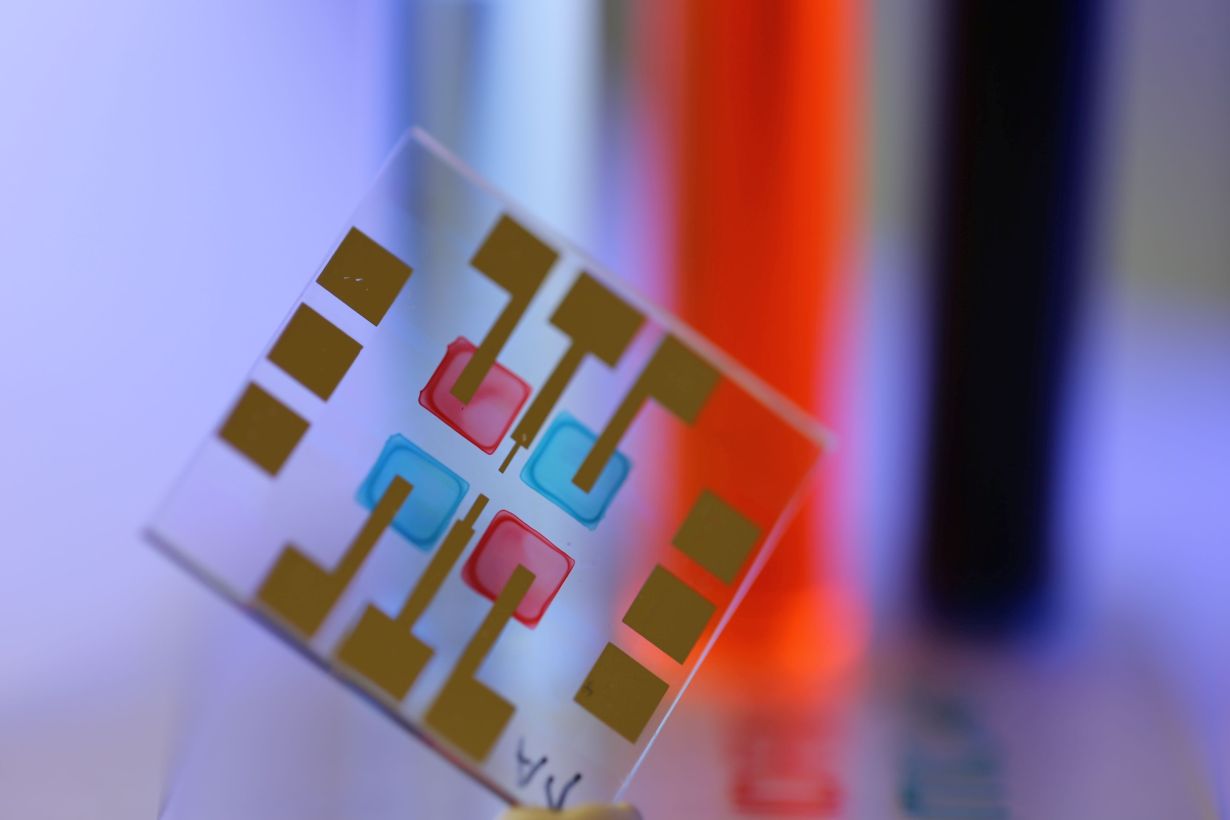2020/2/19 ドイツ連邦共和国・カールスルーエ工科大学(KIT)

Color-selective organic light sensors produced by inkjet printing with semiconducting inks. (Photo: Noah Strobel, KIT)
・ KITが、様々な光の波長に選択的に反応できる有機半導体材料を開発し、その材料のインクを使用したインクジェットプリンティングで光検出器を作製。
・ コンピューターを用いた容易なレイアウト設計により、多様なデザインの光検出器をフレキシブルで軽量な基板に大量にプリント作製できるため、特にモバイルでデバイスでの利用に適すると考える。
・ カメラや人感センサーで使用されている光検出器は、光が有するデータ送受信能力により、遠距離通信での利用が期待されている。屋内照明を使用する可視光通信(VLC)では、無線 LAN や Bluetooth等の従来技術に比してセキュリティー、速度やアクセシビリティ―に優れる。
・ 半導体コンポーネントのプリント作製は比較的新興の技術ではあるが、プリント作製による OLED ディスプレイの生産への多大な投資が進み、フレキシブルな太陽電池や圧力センサーが既に市販されていることや、IoT、スマートシティやインダストリー 4.0 でのセンサー需要が増大していることからも、将来的なアプリケーションのポテンシャルは大きいと考える。
URL: https://www.kit.edu/kit/english/pi_2020_014_having-an-eye-for-colors-printable-lightsensors.php
(関連情報)
Advanced Materials 掲載論文(フルテキスト)
Color‐Selective Printed Organic Photodiodes for Filterless Multichannel Visible Light Communication
URL: https://onlinelibrary.wiley.com/doi/full/10.1002/adma.201908258
<NEDO海外技術情報より>
Abstract
Future lightweight, flexible, and wearable electronics will employ visible‐light‐communication schemes to interact within indoor environments. Organic photodiodes are particularly well suited for such technologies as they enable chemically tailored optoelectronic performance and fabrication by printing techniques on thin and flexible substrates. However, previous methods have failed to address versatile functionality regarding wavelength selectivity without increasing fabrication complexity. This work introduces a general solution for printing wavelength‐selective bulk‐heterojunction photodetectors through engineering of the ink formulation. Nonfullerene acceptors are incorporated in a transparent polymer donor matrix to narrow and tune the response in the visible range without optical filters or light‐management techniques. This approach effectively decouples the optical response from the viscoelastic ink properties, simplifying process development. A thorough morphological and spectroscopic investigation finds excellent charge‐carrier dynamics enabling state‐of‐the‐art responsivities >102 mA W−1 and cutoff frequencies >1.5 MHz. Finally, the color selectivity and high performance are demonstrated in a filterless visible‐light‐communication system capable of demultiplexing intermixed optical signals.



